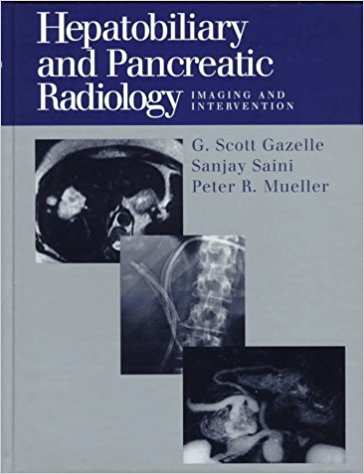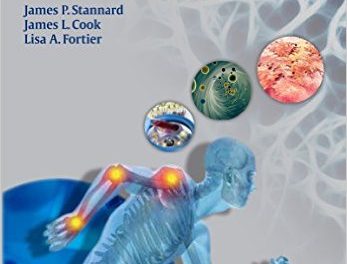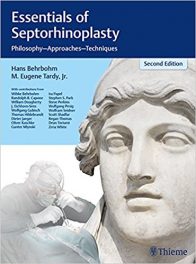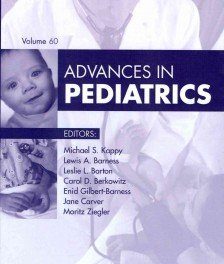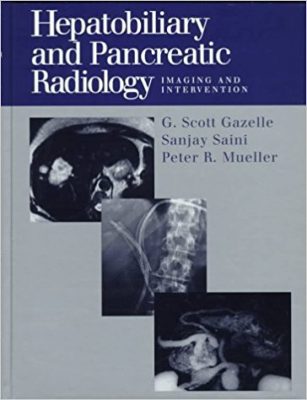 Editors: G. Scott Gazelle, MD; Sanjay Saini, MD; and Peter K. Mueller, MD
Editors: G. Scott Gazelle, MD; Sanjay Saini, MD; and Peter K. Mueller, MD
Publisher: Thieme – 889 pages
Book Review by: Nano Khilnani
The medical field dealing with diseases of the liver, the biliary tract and pancreas saw many advances in the years prior to 1998 when this book was published, the editors point out in their Preface. And as in other specialties, progress has been made in diagnosing, managing and treating various diseases covered in this book, in the 20 years from that year until today in 2017.
This book has been written for practicing radiologists and radiology residents, as well as for others such as: hepatologists, gastroeneterologists, biliary and pancreas specialists and residents.
Seventy specialists in clinical, diagnostic, and interventional radiology, and in imaging modalities (as angiography, computed tomography or CT, magnetic resonance imaging or MRI, nuclear medicine, ultrasound, etc.), interventional therapy and surgery – from all around the United States and eight other countries – Belgium, Germany, India, Ireland, Italy, South Korea, Switzerland, and the United Kingdom – authored the 31 chapters of this large book of nearly 900 pages.
The chapters are organized around four basic sections:
- General (chapters 1 to 10)
- Liver (chapters 21 to 20)
- Biliary Tract (chapters 21 to 27)
- Pancreas (chapters 28 to 31)
Among the numerous and varied diseases covered in this book are: amoebiasis, cirrhosis, cholangiocarcinoma, cholangitis, echinococcosis Epstein-Barr virus infection, fascioliasis, Gilbert’s syndrome, hemochromatosis, hepatitic steatosis (fatty liver disease), hepatitis of various kinds, hepatosplenic schistosomiasis, transthyretin-related hereditary amyloidosis, and yellow fever virus infection.
To get an idea of the structure and presentation of material in chapters, let us take a look at chapter 7, Diagnostic ERCP and PTC (pages 154-170).
After an introductory description of the two imaging techniques – endoscopic retrograde cholangiopancreatography (ERCP) and percutaenous transhepatic cholangiography (PTC), the authors Susan D. Wall and Judy Yee present and discuss them in detail, and provide other topics after that:
Introductory description of ERCP and PTC
- Endoscopic retrograde cholangiopancreatography
- Percutaenous transhepatic cholangiography
- Primary Sclerosing Cholangitis
- Primary Biliary Cirrhosis
- Cholagiocarcinoma
- PSC and Cholagiocarcinoma
- Periampullar Carcinoma
- Chrmotherapy-Related Cholangitis
- Mirizzi Syndrome
- Choledochal Cysts
- Caroli Disease
- Recurrent Pyogenic Cholangitis
- Gallbladder Disease
- Adenomyomatosis and Cholesterolosis
- Pancreas Divisum
- Annular Pancreas
- Acute Pancreatitis
- Chronic Pancreatitis
- Choledocholithiasis
- Pancreatic Tumors
References
Among the many diseases of the liver, biliary tract and pancreas discussed in this book are the following: Budd-Chiari syndrome, cholecystitis, cirrhosis, echinococcal disease, encephalopathy, enterocolitis, fascioliasis, gallstones, Gilbert’s syndrome, hemangioma of liver, hemochromatosis, hepatic steatosis (fatty liver), hepatitis of various kinds, hepatoblastoma, hepatocellular carcinoma (liver cancer), histoplasmosis, Hong Kong disease, hydatid disease of liver, hyperplasia of liver, and jaundice;
Also: Kaposi sarcoma, Kasabach-Merritt syndrome, Kawasaki syndrome, Klatskin tumor, leukemia, lupus, lymphoma, pancreatitis, primary sclerosing cholangitis, sarcoidosis, and transthyretin-related hereditary amyloidosis, and yellow fewer
Numerous types of black-and-white images are presented along the discussions in this and other chapters. Full-color images were rare in the years up to 1998. Besides the types of electronic imaging we mention above, you will also find other types of illustrations to help you better learn and retain what you learned.
This is an excellent textbook on hepatobiliary and pancreatic radiology, and the diagnosis and treatment of diseases of the liver, biliary tract, and pancreas.
Editors:
- Scott Gazelle, MD, MPH is Assistant Professor of Radiology at Harvard Medical School, Director of the Health Services Research Program in the Department of Radiology at Massachusetts General Hospital, and Co-Director of the Center for Clinical Trials in Radiology at Brigham and Women’s and Massachusetts General Hospital.
Sanjay Saini, MD is Assistant Professor of Radiology at Harvard Medical School, and Director of Computed Tomography in the Department of Radiology at Massachusetts General Hospital.
Peter R. Mueller, MD is Associate Professor of Radiology, and Division Head of Abdominal Imaging and Interventional Radiology in the Department of Radiology at Massachusetts General Hospital.

